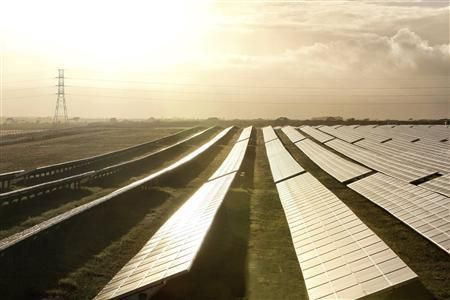Australia Primed For Residential Energy Storage Future

Australia is heading towards more use of solar power and can beef up its residential energy storage market. “Australia’s cheap electricity is coming from rooftop solar. In a nutshell, this means that Australia is primed for residential energy storage in a way that few other nations are — and it may just be a matter of the introduction of the right technology to set off the energy storage boom that the industry has been waiting for,” Cleantechnica reported.
Solar power is predicted to become the primary energy source as solar panels become more environment-friendly, but affordability is still an issue for some. Batteries and power-conversion devices that are essential to connect the photovoltaic, or PV, systems to the grid can be quite expensive.
Renewable Energy World forecasts that by 2018, the global market for residential PV solar installations integration to the grid and energy storage will be 900 megawatts (MW). “The outlook for PV in many major residential solar markets where energy storage is likely to be adopted has weakened considerably during the last year, largely because of reduced government incentives,” said Sam Wilkinson, research manager for energy storage at IHS.
“In particular, the IHS forecast from 2014 to 2017 for total residential installations in Italy, Germany and the United Kingdom—three large PV markets—has been reduced by nearly 50 percent since April 2013,” he added. The projections also noted that worldwide, Japan’s market for PV energy storage will be the highest with 200 MW of installations.
Australia is another country that can take advantage of this emerging market. The country has used an estimated 4,100 MW solar power from installed PV as of March 2015, but this still comprises a relatively small percentage of the country’s entire electricity energy needs. The data, however, showed that use of solar power in Australia has increased 10-fold from 2009 through 2011.
The clean energy sector is now a $300 billion venture with giant economies such as China, the United States, the European Union, Japan, India and Brazil leading the way. Together, the G-20 accounted for more than 90 percent of global clean energy investment over the past decade, according to a recent Pew Charitable Trust report.
Through 2030, nations are on track to add or replace more than 1,600 GW of electric generating capacity for an installed total of slightly more than 3,700 GW, according to the Bloomberg New Energy Finance “2030 Market Outlook.”
Solar panels’ key components are sourced from titanium dioxide, which has photocatalytic properties. A mining company located in Chile, White Mountain Titanium Corporation (OTCQB:WMTM) is aiming to be one of Chile’s leading titanium dioxide sources. It is currently developing its principal project, the Cerro Blanco rutile property in the Atacama region of Santiago, Chile.
To contact the writer, email: vittoriohernandez@yahoo.com





















